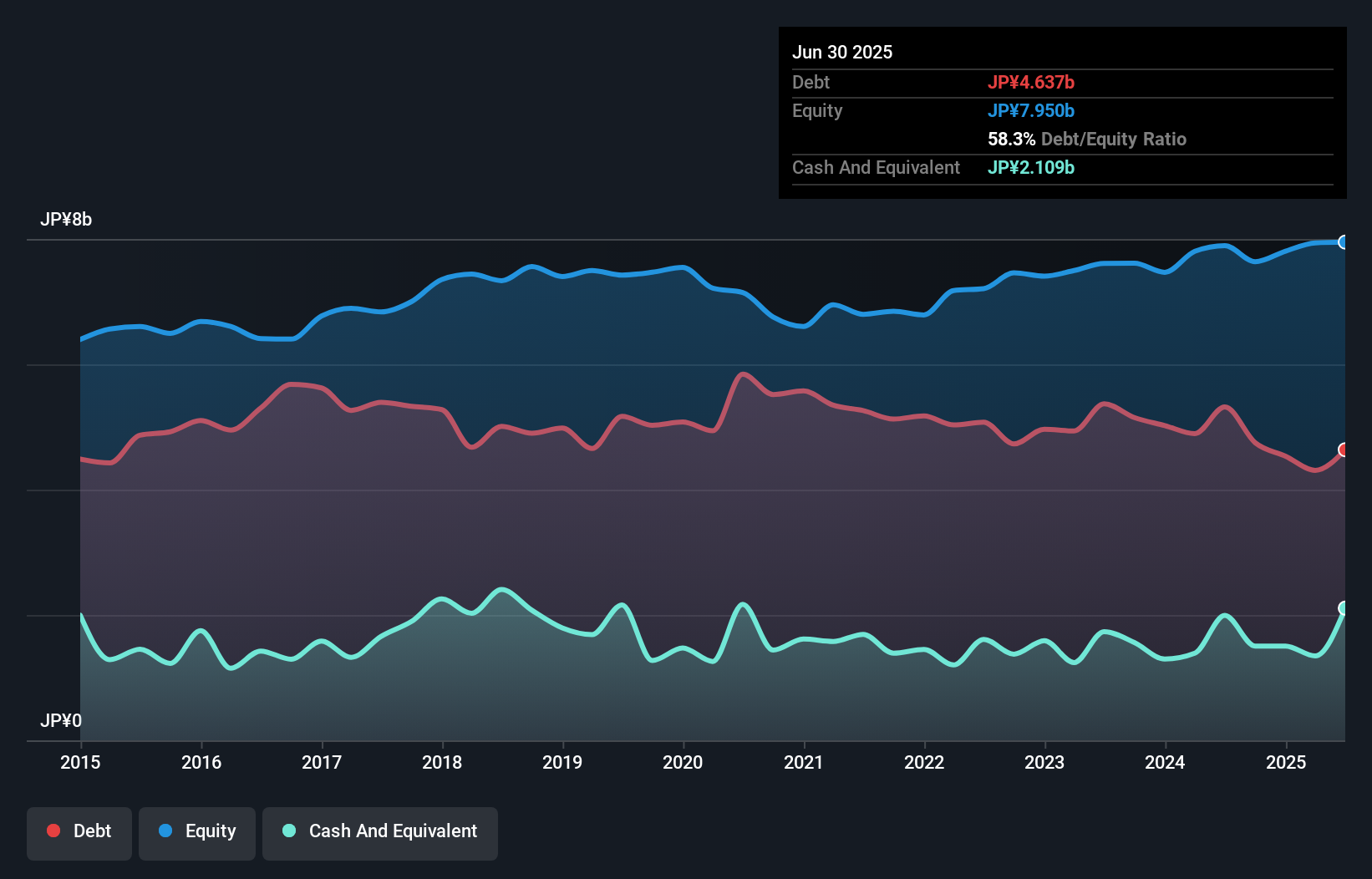The external fund manager backed by Berkshire Hathaway's Charlie Munger, Li Lu, makes no bones about it when he says 'The biggest investment risk is not the volatility of prices, but whether you will suffer a permanent loss of capital.' So it might be obvious that you need to consider debt, when you think about how risky any given stock is, because too much debt can sink a company. Importantly, Dijet Industrial Co., Ltd. (TSE:6138) does carry debt. But the more important question is: how much risk is that debt creating?
When Is Debt A Problem?
Debt assists a business until the business has trouble paying it off, either with new capital or with free cash flow. If things get really bad, the lenders can take control of the business. However, a more frequent (but still costly) occurrence is where a company must issue shares at bargain-basement prices, permanently diluting shareholders, just to shore up its balance sheet. Of course, the upside of debt is that it often represents cheap capital, especially when it replaces dilution in a company with the ability to reinvest at high rates of return. The first thing to do when considering how much debt a business uses is to look at its cash and debt together.
How Much Debt Does Dijet Industrial Carry?
You can click the graphic below for the historical numbers, but it shows that Dijet Industrial had JP¥4.64b of debt in June 2025, down from JP¥5.32b, one year before. However, it also had JP¥2.11b in cash, and so its net debt is JP¥2.53b.

How Strong Is Dijet Industrial's Balance Sheet?
The latest balance sheet data shows that Dijet Industrial had liabilities of JP¥3.75b due within a year, and liabilities of JP¥4.61b falling due after that. On the other hand, it had cash of JP¥2.11b and JP¥1.76b worth of receivables due within a year. So its liabilities total JP¥4.49b more than the combination of its cash and short-term receivables.
This deficit casts a shadow over the JP¥2.66b company, like a colossus towering over mere mortals. So we definitely think shareholders need to watch this one closely. After all, Dijet Industrial would likely require a major re-capitalisation if it had to pay its creditors today.
See our latest analysis for Dijet Industrial
We use two main ratios to inform us about debt levels relative to earnings. The first is net debt divided by earnings before interest, tax, depreciation, and amortization (EBITDA), while the second is how many times its earnings before interest and tax (EBIT) covers its interest expense (or its interest cover, for short). Thus we consider debt relative to earnings both with and without depreciation and amortization expenses.
With a debt to EBITDA ratio of 1.9, Dijet Industrial uses debt artfully but responsibly. And the alluring interest cover (EBIT of 8.6 times interest expense) certainly does not do anything to dispel this impression. Notably, Dijet Industrial's EBIT launched higher than Elon Musk, gaining a whopping 774% on last year. The balance sheet is clearly the area to focus on when you are analysing debt. But it is Dijet Industrial's earnings that will influence how the balance sheet holds up in the future. So when considering debt, it's definitely worth looking at the earnings trend. Click here for an interactive snapshot.
Finally, a company can only pay off debt with cold hard cash, not accounting profits. So we always check how much of that EBIT is translated into free cash flow. Over the last three years, Dijet Industrial actually produced more free cash flow than EBIT. That sort of strong cash conversion gets us as excited as the crowd when the beat drops at a Daft Punk concert.
Our View
Based on what we've seen Dijet Industrial is not finding it easy, given its level of total liabilities, but the other factors we considered give us cause to be optimistic. In particular, we are dazzled with its conversion of EBIT to free cash flow. When we consider all the factors mentioned above, we do feel a bit cautious about Dijet Industrial's use of debt. While we appreciate debt can enhance returns on equity, we'd suggest that shareholders keep close watch on its debt levels, lest they increase. When analysing debt levels, the balance sheet is the obvious place to start. However, not all investment risk resides within the balance sheet - far from it. Be aware that Dijet Industrial is showing 3 warning signs in our investment analysis , you should know about...
At the end of the day, it's often better to focus on companies that are free from net debt. You can access our special list of such companies (all with a track record of profit growth). It's free.
New: Manage All Your Stock Portfolios in One Place
We've created the ultimate portfolio companion for stock investors, and it's free.
• Connect an unlimited number of Portfolios and see your total in one currency
• Be alerted to new Warning Signs or Risks via email or mobile
• Track the Fair Value of your stocks
Have feedback on this article? Concerned about the content? Get in touch with us directly. Alternatively, email editorial-team (at) simplywallst.com.
This article by Simply Wall St is general in nature. We provide commentary based on historical data and analyst forecasts only using an unbiased methodology and our articles are not intended to be financial advice. It does not constitute a recommendation to buy or sell any stock, and does not take account of your objectives, or your financial situation. We aim to bring you long-term focused analysis driven by fundamental data. Note that our analysis may not factor in the latest price-sensitive company announcements or qualitative material. Simply Wall St has no position in any stocks mentioned.
About TSE:6138
Dijet Industrial
Engages in the manufacture and sale of cemented carbide tools worldwide.
Flawless balance sheet established dividend payer.
Market Insights
Community Narratives



